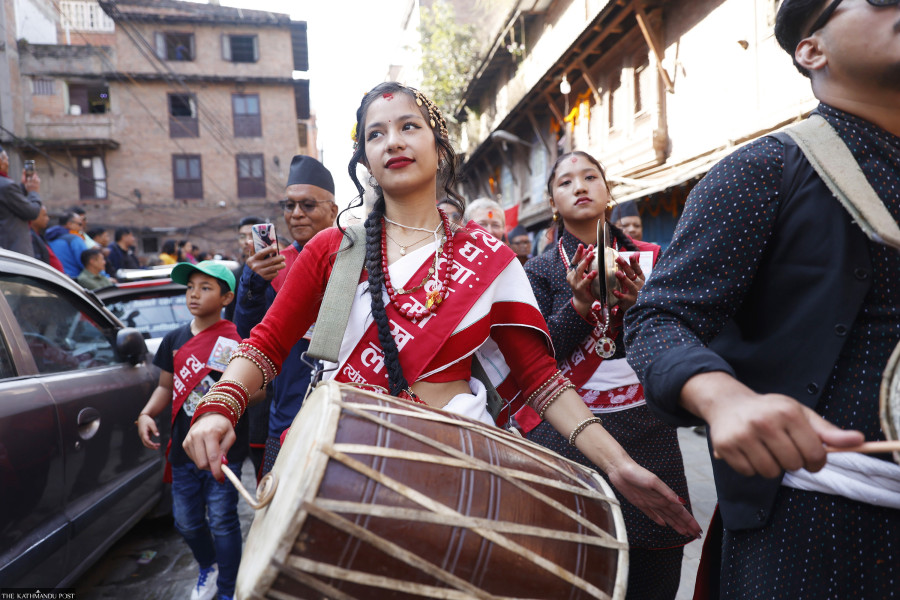National
Newa community marks Nepal Sambat New Year 1144
People from the Newa community on Tuesday welcomed the Nepal Sambat New Year 1144 by organising various programmes.
Post Report
People from the Newa community on Tuesday welcomed the Nepal Sambat New Year 1144 by organising various programmes.
The National Luminary, Shankhadhar Sakhwa is credited with initiating the Nepal Sambat in 880 AD by freeing the poor from their debt during the reign of the Lichhavi dynasty king Raghav Dev.
Historian Dr Triratna Manandhar says that the Nepal Sambat calendar was recognised as the state calendar until the reign of King Prithvi Narayan Shah.
According to Manandhar, the Shaka Sambat calendar was in use before the Lichchhavi rule. “The Nepal Sambat is a unique calendar of Nepal as it has been named after the country’s name,” he said.
People from the Newa community organised rallies—known as Bhintuna rally—in various parts of the country to mark the New Year’s Day of Nepal Sambat. Participants donned traditional Newa attire and displayed various dances to the tunes of cultural musical instruments.





The Newa community will also mark Mha Puja in the evening. Mha Puja falls on the first day of Nepal Sambat year.
Mha Puja literally means self-worship. People of the Newa community mark this on the fourth night of Tihar, Kartik Shukla Pratipada, by worshiping self with the hope that the light of knowledge shall spread after the destruction of ignorance.
On this day, sweet dishes are prepared at home and mandalas (sacred diagrams as a symbol of their soul) are drawn on the floor and worshiped. Family members sit in front of the mandalas and the lady of the house presents each of them with a burning wick, sacred thread Jajanka, and fruits symbolising long life and good fortune.








 5.44°C Kathmandu
5.44°C Kathmandu







%20(1).jpg&w=300&height=200)





